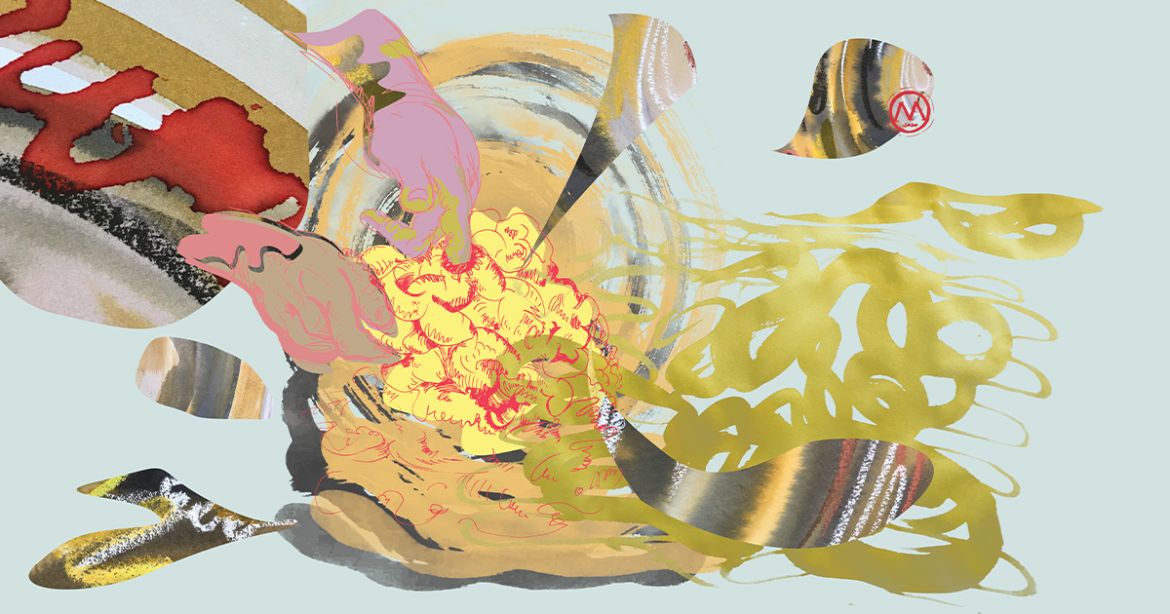What is brain neuroplasticity?
Your brain is made of cells called neurons. Neurons can communicate with each other. They do it in many different ways. Your behavior and reactions depend on these methods of communication. We are all different because our neurons make different connections.
In this article you will learn:
- What brain neuroplasticity is.
- What the myelin coat is.
- How to use brain neuroplasticity in your spiritual development.
- What stimulates your brain and creates new connections between neurons.
The number of neurons is estimated at around 10 million. However, it’s not their number that determines your intelligence, but the connections these cells are able to generate with each other. These are called synaptic connections. Each neuron is capable of generating an average of 10,000 connections. Synapses are simply gaps between one neuron and the next that facilitate an electrical leap. They develop through emotions (immediately) and repetition (gradually).
When the outside world revives your senses, electricity is released in your brain. Electricity flows through the neural pathways that you build from experience. It always flows where there is the least resistance, that is, to the paths that you have activated before because experience increases the efficiency of neurons.
The more you use a neuron, the better it develops. And unused neurons disappear.
Often used neural pathways can also unfold a coat, which is something like an installation around electrical wires called the myelin coats. It conducts electricity much faster than optical fiber compared to copper wire. Myelin makes neurons extremely effective. As a result, tasks are performed by the brain without exertion, so your body saves a lot of valuable energy.
Most of these myelin paths form in your brain by the time you are two years old when you learn to walk and talk, and you finish around age 7. This is when your body produces the most myelin. And then it restores itself again during puberty when you have to learn new skills related to bonding and reproducing. So everything you learn at this age develops large effective branches in your neuron network. This is why the programming process is most effective then. For this reason, for example, it is easier for children to learn a new language or to ski than for adults. Unfortunately, this also means that any habits you acquire during this time will be harder to change. Your brain will always prefer connections to the myelin paths because they conduct electricity more easily. So it’s important to be aware of this when shaping new habits.
Connections in your brain are made through learning, repetition, emotional arousal, focus, and practice regardless of age.
This ability of your brain to adapt to a new environment and learn new things is called brain plasticity. The plasticity of the brain allows its physical, chemical, and biological properties to change.
The ability of the brain to cause physical changes in it by creating new neural pathways and synaptic connections helps the brain to recover from disorders and injuries, and to reduce the effects of diseases such as Alzheimer’s multiple sclerosis, dyslexia, ADHD, insomnia, and Parkinson’s disease.
It also allows you to consciously influence the structure and operation of your brain. Your need for self-realization should push you in this direction sooner or later so that you can fully use the full potential that lies in you. By controlling your brain neuroplasticity, you will be able to decide for yourself who you want to become and who you want to be.
The brain is susceptible to both positive and negative changes.
The first connections between neurons are formed even before an organism is born. This means that when a pregnant mother is in enriching and stimulating environments, the number of synapses in her babies increases. And stressful situations cause the number of neurons in their children to decrease.
The connections between the neurons in your brain have been made and your responses increased. Other connections were disconnected on a “use or discard” policy. It is a process of adapting to the individual needs of the individual. So each of us has a different number of connections. Their number is related not only to the environment in which your mother was but also to the environment in which you are or have been.
If a child is in contact with many people, plays with other children goes outside, faces new challenges, creates more connections than a child who spends time alone in front of a TV or laptop.
The brain develops throughout life, although it does, of course, slower with age.
However, a properly stimulated brain, when exposed to certain stimuli, can make a person increase their abilities in some areas. Research shows that brain training causes an increase in cerebral blood flow, better synchronization of neural connections, and an increase in gray matter connections.
What stimulates your brain and creates new connections?
- Music – plays an instrument.
- Driving a car and related spatial orientation (only without GPS of course).
- Physical activity – regular, cyclical training.
- Learning foreign languages.
- Recurring posts.
- The adequate amount and quality of sleep.
- Artistic creation.
- Meditation.
- Travels and exploring the world.
- Using mnemonic tools (word games, crosswords, puzzles, logic games, etc.).
- Using a non-dominant hand.
- Diet.
- Stress.
- Dance.
- Emotions.
- Focus.
- Social interactions.
Of course, the plasticity of the brain also has its drawbacks. It makes possible the formation of unwanted connections. For example, reliving the trauma constantly makes this extremely powerful experience embedded in the brain. In such situations, it is necessary to disconnect and desynchronize faulty connections.
The combination of these connections creates your identity. By creating new connections and disconnecting existing ones, you are able to change your brain and yourself.
How to use neuroplasticity for your own spiritual development?
Neuroplasticity proves that your brain is not static, it is constantly changing. It is influenced by the factors of external and internal awareness. Many neural networks are either subconscious or completely unconscious (somatic).
Most of them are based on fear because that’s how the survival instinct works.
So there are networks of beliefs, habits, patterns in your brain, i.e. guidelines for your opinions, attitudes, and behaviors. Those that were created in the past may not reflect the present or future reality.
Each of us lives on the autopilot of our own habits, follows well-known paths, and follows known patterns, whether we like it or not.
The American psychologist William James believed that our whole life is nothing more than a set of habits. Habits are our everyday life. When they are good they are supportive, but most of them are unfavorable thinking and acting styles that work against you. It is you who should make sure that they are your good guides. The first step is to realize that you are ruled by a habit, and then through self-motivation, self-discipline, a strong will to replace it with a new one.
So, neuroplasticity can help you react to the situations and choices that come your way so that you can consciously lead your life and fulfill yourself. Through targeted training, you can change your brain. You can eliminate habits that do not serve you and create new ones that support you.
Source:
„Neuroplastyczność. Struktura i organizacja“, cognifit.com, https://www.cognifit.com/pl/brain-plasticity-and-cognition
Agata Popanda „Mózg-artysta czyli kilka słów o neuroplastyczności”, 23 Marzec, 2015, wiecjestem.us.edu.pl, http://wiecjestem.us.edu.pl/mozg-artysta-czyli-kilka-slow-o-neuroplastycznosci
Courtney E. Ackerman „What is Neuroplasticity? A Psychologist Explains”, 2020, positivepsychology.com, https://positivepsychology.com/neuroplasticity/
Loretta Graziano Breuning „Tame your anxiety”, Rowman & Littlefield, Lanham, Boulder, New York, London, 2019,
Thanks to our cooperation with Mindvalley, you can now change your habits by learning from the world’s best experts.
Britain’s #1 therapist, Marisa Peer shares her groundbreaking transformational hypnotherapy process in her bestselling program, Uncompromised Life. She will show you how to capture the empowering beliefs, habits & thought patterns of the world’s top super achievers — and instantly install them in your mind. Overcome your self-doubts and limitations, rapidly.


